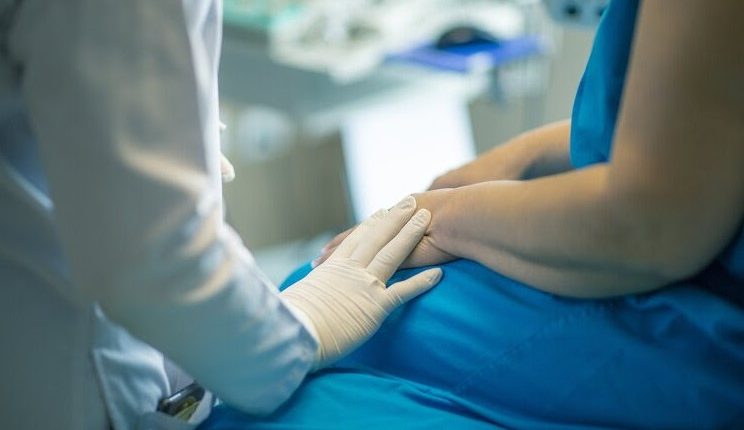
Symptoms and causes of Spitz nevus
Spitz nevus is a benign skin tumour named after Sophie Spitz, the physician who first identified its characteristics. It is a skin formation that tends to be benign and occurs mainly in young people, but not only
Spitz nevus is a melanocytic tumour that is almost always benign and can appear in several body districts
- face;
- trunk;
- legs.
Spitz nevus usually develops in children, in the form of a pinkish, poorly pigmented nodule, often with a rapidly appearing angiomatous component.
In half of the cases, dermatological examination with dermoscopy reveals a ‘starburst’ pattern that can be easily recognised by an experienced eye.
There is, however, a pigmented form, called REED nevus, in which the heavily pigmented cells take on a fusiform appearance.
The size is normally quite small, always limited within a radius of 1 centimetre.
Spitz nevus in adults
In the past, Spitz’s nevus was also called ‘juvenile melanoma’ and this created quite a few misunderstandings.
That is why this misleading name is no longer used, as it is neither a melanoma, nor does it only occur in children.
Spitz nevus, on the other hand, when found outside childhood, can give rise to a diagnosis problem.
Over the years it can undergo mutations: at first lighter, it may tend to darken and flake.
Its presence may be completely asymptomatic, but in some cases the subject complains of itching in or around the site.
Causes and risk factors
As with other nevi, the actual causes of their appearance are unknown.
Those most affected include:
- fair phototypes
- those who have spent a lot of time exposed to the sun’s radiation in the past, collecting numerous sunburns and burns.
In fact, it must be remembered that the skin has a memory and can ‘respond’ to mistakes made over time through the appearance of:
- solar lentigo
- epitheliomas;
- actinic keratoses;
- unsightly spots.
Diagnosis and treatment of Spitz nevus
Sometimes because of its similar structure to other nevi and mainly because of its resemblance to the much more dreaded melanoma, it should be investigated with at least a biopsy and histological examination precisely so as not to risk overlooking a tumour formation.
In such cases, it is then sufficient to surgically remove the nevus under local anaesthesia and analyse it.
If a nevus, even a non-suspicious nevus, occurs in very visible or ‘troublesome’ areas of the skin because it may be located in a spot subject to rubbing, for example near elastic underwear, or causes itching, even if benign it can be appropriately surgically removed and routinely analysed.
There are also cases in which the specialist will recommend monitoring the formation by scheduling specialist visits with dermoscopy and videodermoscopy quarterly, six-monthly or, depending on the situation, annually.
What is dermoscopy?
It is a non-invasive diagnostic examination performed using a videodermatoscope.
It makes it possible to examine in detail and possibly ‘photograph’ the epidermis and thus also all the melanocytic lesions.
What is it used for?
Dermoscopy is ideal for in-depth mapping of nevi and for recognising any skin abnormalities.
It enables the diagnosis of skin tumours and their follow-up.
It is essential for the early diagnosis of melanomas and other tumours that would not be recognisable to the naked eye.
The images, once acquired by the specialist, are archived for subsequent checks so that the evolution of the lesions can be monitored over time.
Self-prevention with the ABCDE rule
The ABCDE rule we must never forget in order to make an initial self-evaluation: we are the first doctors, so we must monitor our nevi or moles, as we commonly call them, and watch for any changes in colour and shape, paying attention to
asymmetry (A)
irregular borders (B);
colour (C): they may change from light to dark or vice versa;
size (D)
evolution (E): so change in appearance in a short time.
Read Also:
Emergency Live Even More…Live: Download The New Free App Of Your Newspaper For IOS And Android
Epidermolysis Bullosa And Skin Cancers: Diagnosis And Treatment
Skin: What To Do In Case Of Folliculitis?
Childhood Psoriasis: What It Is, What The Symptoms Are And How To Treat It
Dermatological Examination For Checking Moles: When To Do It
What Is A Tumour And How It Forms
Rare Diseases: New Hope For Erdheim-Chester Disease
How To Recognise And Treat Melanoma
Moles: Knowing Them To Recognise Melanoma
Skin Melanoma: Types, Symptoms, Diagnosis And The Latest Treatments
Melanoma: Prevention And Dermatological Examinations Are Essential Against Skin Cancer



